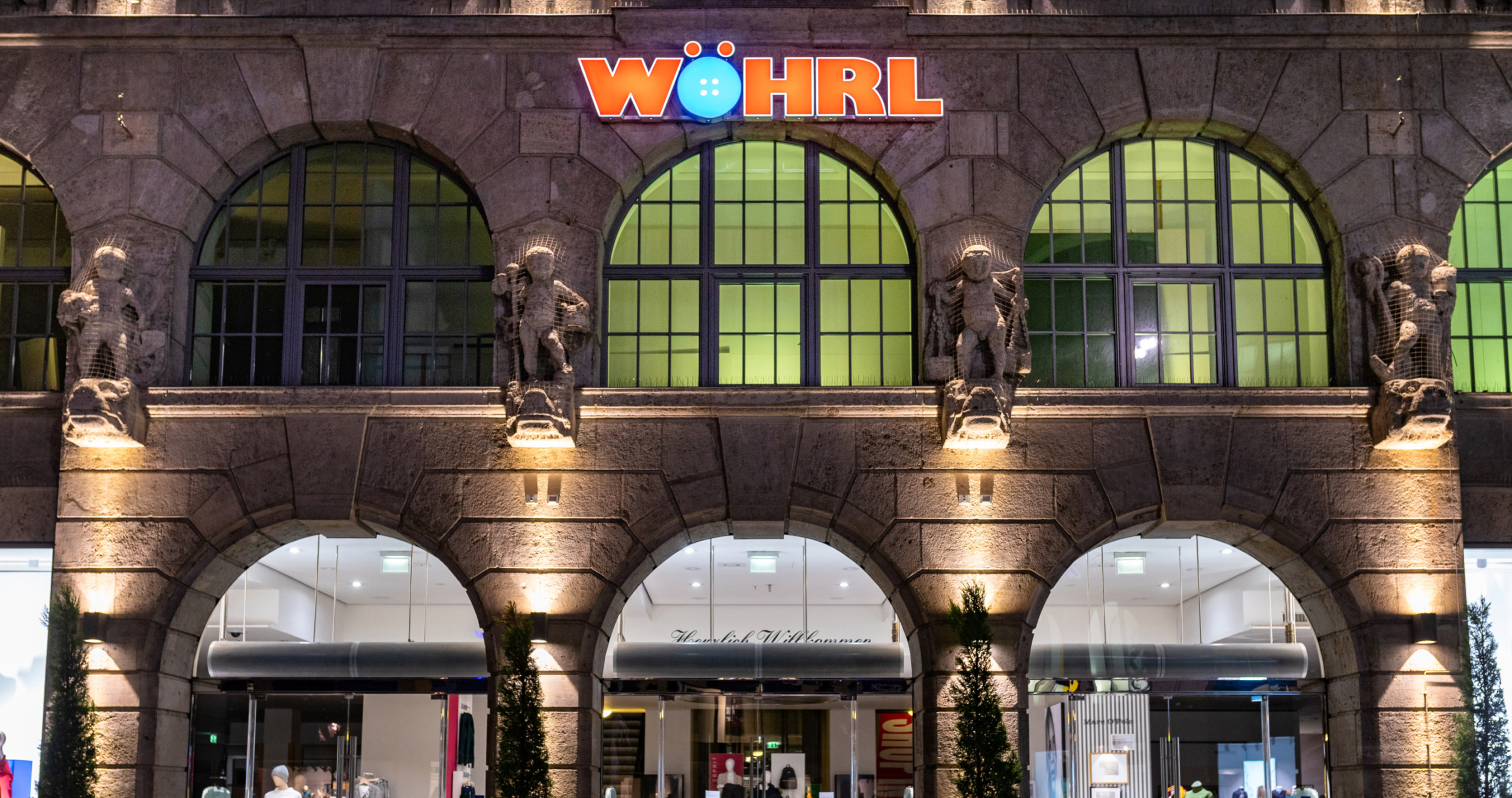“We used a fixed markdown ladder and it did happen that we marked down items that should not have been marked down in the first place.”
Rudolf Wöhrl SE discusses the way the company handled markdowns: manually. “We were missing a forward-looking approach. In the past, reducing markdowns has usually been at the expense of higher inventory levels. We are currently experiencing a very volatile market. Of course, this is in part due to the current market situation.” The company mentions COVID, the Ukraine war and how they have affected the industry by way of inflation, price increases and consumer reticence. “We believe it is important to significantly optimize one’s resources, i.e. the cost of goods, and to control inventory. Ultimately, this is a holistic issue.” The company decided to battle these disruptions with Centric Pricing & Inventory™.
90 Years Strong
Established in 1933 by Rudolf Wöhrl, Wöhrl is one of Germany’s largest family-run fashion companies. Having survived the second world war, Wöhrl went through ups and downs but celebrated its 90th year of existence in 2023. A successful restructuring in 2017 modernized the company, with a then-annual turnover of €262 million, saving almost all jobs. Today, the company employs just under 1,400 people and sells men’s, women’s and children’s international brands of clothing in their 29 retail stores and online. The company says, “We had a big store reopening in September of 2022. We significantly expanded the store, added additional product categories, creating a one-of-a-kind shopping experience.”
Why Centric Pricing & Inventory?
The company explains the situation that led to implementing Centric Pricing & Inventory. “With markdowns, it is crucial not only to look back to see what the actual sell-through-rate is, for example, but to think in terms of a lifecycle too. Also, to focus on reducing the ending-stock so that, in addition to productivity management along the entire lifecycle, an optimized ending-stock can be achieved. The AI of Centric Pricing & Inventory supports all of this.”
The Future is Here: AI
Centric Pricing & Inventory’s AI employs predictive algorithms and machine learning to interactively optimize pricing over the stages of the retail lifecycle: initial price, promotion, markdown and even dynamic pricing.
The company representative talks about the importance of AI. “I was fortunate enough to familiarize myself with AI relatively early on at my previous company. We started using AI because of the new challenges we were facing in the fashion industry. Firstly, there is the issue of volatile business development, we also have to achieve more with fewer resources, and then there’s markdown management, for which we are using Centric Pricing & Inventory.” He does caution that markdowns must be done carefully; in a very targeted and granular way or it may result in losses.
“AI is certainly a technology of the future. It will never completely replace people, especially in our industry where it is important to observe trends and future developments and then implement them, particularly when it comes to curating assortments,” says the company. “On the other hand, we believe that recurring, analytical tasks are well suited to be supported by AI software.”
The company further notes, “For AI to be effective, it must be accepted by users. This way you can efficiently tackle a large part of recurring daily tasks. And at the end of the day, this may very well increase your bottom line.”
Benefits
Wöhrl is using Centric Pricing & Inventory to increase margins and drive up productivity. Says the company, “For now, we are focusing on improving our bottom line. To do so, we use Centric Pricing & Inventory’s markdown module. This should lead to more positive results with the existing staff and capacity.”
When asked about tangible effects of the tool, the company responds, “We definitely see improvements. If it functions the way we all want it to, we will be able to increase productivity. In general, we use the tool heavily for in-season processes, starting with the receipt of goods from our brands. With Centric Pricing & Inventory, we have been able to increase the gross profit margin by between 2% – 4% with a significantly lower markdown rate.” The company says, “Most importantly, our inventory has not increased as a result. This clearly shows that the software works, because otherwise we would have to deal with markdowns in the form of end-of-season clearance sales. But the fact that we can control our inventory despite this more moderate and granular use of markdowns shows that there’s an increase in productivity.”
Putting it to the Test
Wöhrl decided to run a test using electronic product labels (EPLs) at their Nuremberg store for the grand re-opening. “We wanted to find out how well the Centric Pricing & Inventory machine actually performs,” says the company. They placed EPLs on 3,000 articles and used Centric Pricing & Inventory for dynamic pricing. “This test was not just about downward price optimization—traditional markdowns—but also about an upward dynamic, i.e. price increases due to items in high demand, especially for brands.”
We were able to increase the gross profit by 5%, which is even more than we normally achieve. This is proof-of-principle that Centric Pricing & Inventory’s AI can be used very efficiently for dynamic pricing.”
Seamless Integration
In terms of the data structure and systems used throughout the company, not much has changed because Centric Pricing & Inventory integrates with the company’s existing solutions and pulls data from Wöhrl’s ERP system. As a result, the system landscape didn’t require any major adjustments. The company says, “Organizationally, we have not cut staff at all. We certainly could have done so, but didn’t. In the end, we reprioritized. For us, it is crucial that the buyer or product manager can really focus on assortments and curation, i.e. on their actual responsibilities. Repetitive administrative activities take up a lot of time and resources, but if they are outsourced to a system—in this case to Centric Pricing & Inventory’s AI—it frees up more time for the core business. That’s what we’re really noticing at Wöhrl now, and we’re therefore very content to use the solution in the way we do.”
Teamwork
“The Centric Pricing & Inventory team is very approachable, staffed with many highly qualified experts, yet still operates very much like a start-up, meaning they respond flexibly to customer needs,” says the company. “We believe that the way we have worked together to create the customer experience is outstanding. And we really like the dashboard to activate the solution.”
Looking Ahead
There are other aspects of Centric Pricing & Inventory Wöhrl is looking to implement. “The topic of replenishment is definitely one we’d like to address,” says the company. “We are currently revising our company’s processes in general and standardizing them to a certain extent. The logical next step would be to think about initial allocation and replenishment in order to have a comprehensive solution for the entire product value chain.”
New to Centric PLM? Learn more
What is Centric Pricing & Inventory? Learn more
What is Centric Market Intelligence? Learn more
Centric Visual Boards Learn more












